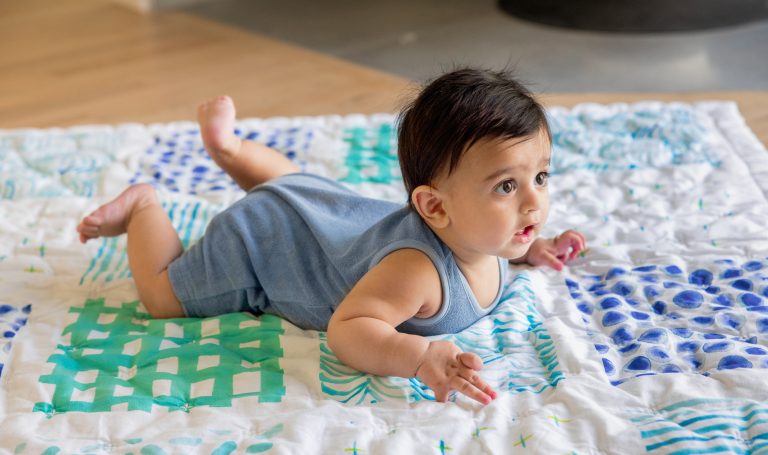What is “serve and return” and why is it so important?

“Serve and return” is a phrase coined by Harvard researchers to describe back-and-forth interactions between adults and children, using the analogy of tennis (or any net sport). One person “serves” by offering up a sound, glance, word, or gesture, and the other “returns” it:
Your baby looks at you, and you smile.
Your baby smiles back, and you laugh, then so does your baby.
You ask, “what’s so funny?” and your baby laughs again.
You reach out to extend a finger, and they grab it.
This may not feel like a typical conversation, but it’s a crucial way adults can bond with babies and young children ❤️ These interactions are a critical part of cognitive growth in infants and babies, and support the very foundation of their brain architecture.
Here are a few ways to engage your baby in “serve and return” interactions:
Notice the “serves”
It isn’t always easy to tell when your baby is seeking an interaction with you—they’re in the very early stages of learning to communicate. It may seem like all they can manage at first are a few simple displays of emotion, like crying and smiling. Yet each time they glance at you, make a sound, or even each flinch can be an opportunity to connect with your baby. Responding doesn’t have to take much, either: babies love when you repeat what they do back to them, and may start mimicking you as well.
Narrate

This one can take practice, especially if you’re not in the habit. Talking to someone who can’t talk back can feel strange at first, so thinking of it as narration—“thinkalouds” in educator speak—can help. Try giving your baby a house tour, for example, and explain what you’re doing, where you’re going, and what you’re looking at and interacting with. If your baby gestures at something (or even if you think they may have), or watches something for awhile, talk to them about it: “you see the light switch? When I flick it up, the light turns on. When I flick it down, the light turns off. Do you want to try?” Help your baby do it too by putting your hand over theirs.
Act like it’s a real conversation

Because your baby isn’t talking yet, they communicate in other ways. Your baby gets the most out of your “dialogues” when you tune into their efforts and treat interactions like back-and-forth conversations.
If your baby is holding a ball, for example, you can say “look at the ball you’re holding! What color is it?” and then wait for some sort of response—a gurgle, a smile, a hand movement. Then you can say “right, it’s orange. I like to roll that ball, can I show you?” Asking a question shows your baby that our voices change depending on what we’re saying, and that a question is an invitation for the other person to speak or respond.
Take your time
Consider slowing things down when you engage with your baby, pause, and allow them plenty of time to make a sound or gesture in response. There’s no rush in a serve-and-return dialogue. The only goal is to stay engaged for as long as your baby wants to keep the conversation going ❤️
Resources
Serve & Return (Harvard)
Posted in: 5 - 6 Months, Bonding, Language, Empathy, House Tours, Child Development
Keep reading


5 - 6 Months
Welcome to The Senser Play Kit for months 5-6
Watch Lovevery CEO Jessica Rolph introduce the Senser Play Kit for months 5 and 6 of your baby's life.


5 - 6 Months
Week 18: Kicking play helps your baby learn to roll
Kicking play develops crucial motor skills. Learn why your baby kicks and some fun ways to encourage them to practice.


5 - 6 Months
Week 19: “Swimming” in tummy time yet?
Your baby needs lots of tummy time to build core muscle strength for crawling. Here are the different stages of tummy time and ideas to make the most of them.
